The Nordic population 2025
On January 1st, 2025, the Nordics had a total of 28.3 million registered residents. This is an increase by 150,000 residents, or 0.5%, compared with 2024. Over the past 25 years, the Nordic population has grown by 6%. In the same period, the age group 0-19 years has decreased by -13%, the working age group (20-64 years) has decreased by -3% and the group 65 years and older has increased by 31%.
Population growth and structure are important factors in regional development. While there is growth in the Nordics, low birth rates (CHIL02) and higher life expectancy (LIFE01) are transforming the shape of the population pyramid. The transition towards an older population structure is already apparent in several Nordic countries.
As a result of demographic change the proportion of young people and people of working age is shrinking, while that of those retired is expanding. And the share of older people in the total population is expected to increase significantly in the coming decades (POPU06).
Population size and change
The total Nordic population, on January 1st, 2025, was 28.3 million.
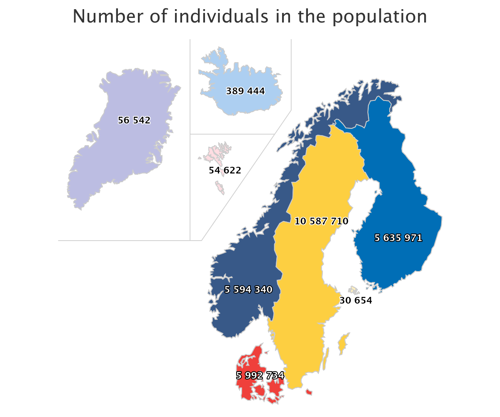
Source: Nordic Statistics Database, POPU01
Seven of eight Nordic countries; Denmark, Faroe Islands, Finland, Åland, Iceland, Norway and Sweden, had population growth in 2024. The population of Iceland grew the most, by 1.5%, while Sweden had the smallest increase with 0.3%. In Greenland, population declined by -0.3 percent, or just under 200 people. Together, this gave a total increase of the Nordic population by 0.5% in 2024.
In the past 25 years, all eight countries have had population growth, but the size of that growth varies. Compared with the year 2000, the population of Iceland has grown the most, it has increased by just under 38%. The increase in Norway during the same period is 24%, in Faroe Islands, Sweden and Åland it is 19%, in Denmark 12%, Finland 9% and in Greenland 1%.
This gives a combined growth of the Nordic population by 6%, compared to just under 5% in the EU (2023, 2024 value not yet available).
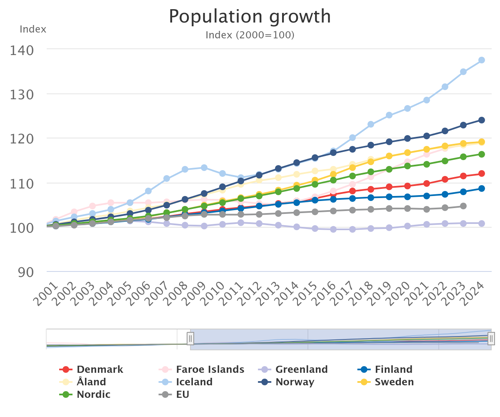
Source: Nordic Statistics Database, POPU10
The share of people 65 years and older continues to increase
The population of the Nordics on January 1st 2025 was 28.3 million people. Young people aged between 0 and 19 years made up 22% of the Nordic population, while people considered to be of working age (19 to 64 years) accounted for 57%. People aged 65 years and over had a 21% share.
As always, these shares vary somewhat over the countries, but some patterns are the same. The share of young people (0-19 years) is decreasing in all eight countries, although be it at different paces. Compared with the year 1990, this age group is down by -13% in the Nordic region. On a country level the decrease varies between -7% in Sweden and -27% in Iceland.
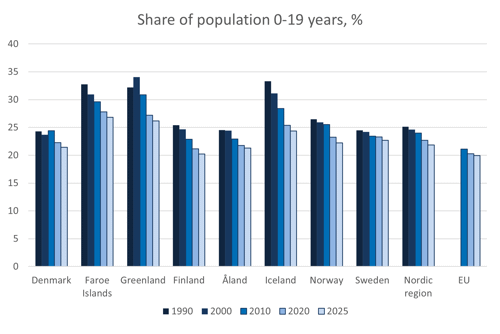
Source: Nordic Statistics Database, POPU01
The development of the share of people of working age, 20-64 years is a bit more diverse. In the Nordic region, the group has decreased by -3% since 1990. In Finland, it has decreased by as much as -8% in the same period, while it has increased in Norway (3%) and Iceland (7%).
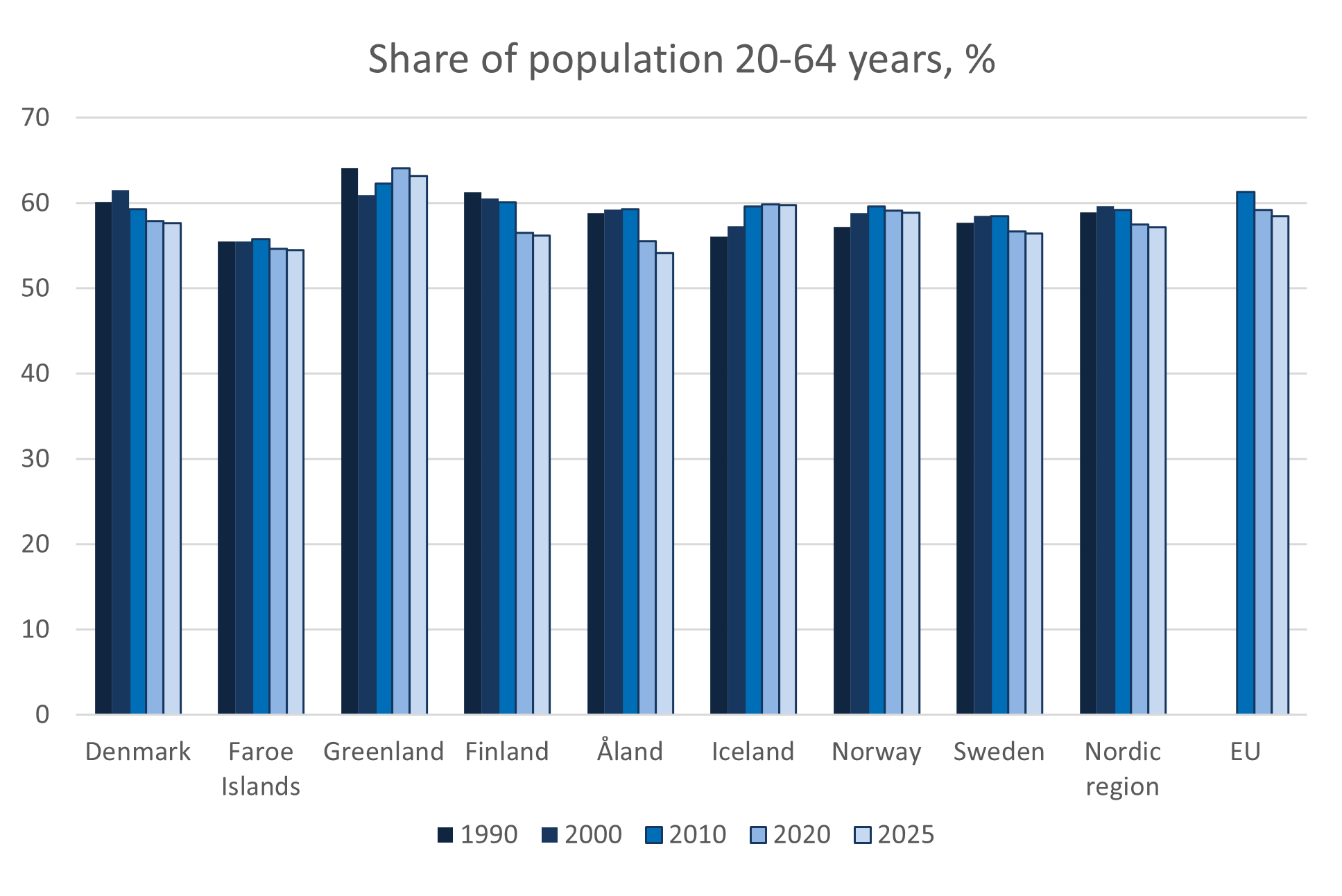
Source: Nordic Statistics Database, POPU01
The share of people aged 65 years or older is often the focus when population structure is analysed. In the Nordic region, this group has increased by 31% since 1990. In the eight countries, increase varies between 16% in Norway and 184% in Greenland (starting from a very small share of 3.7% in 1990). Of the five larger countries Finland has the largest increase, 77%.
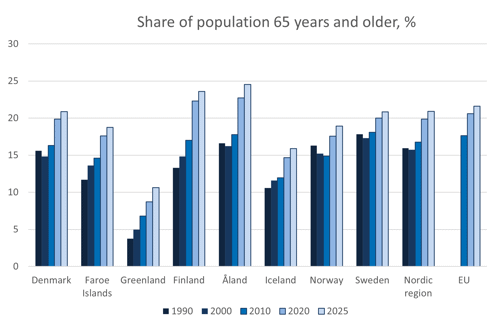
Source: Nordic Statistics Database, POPU01